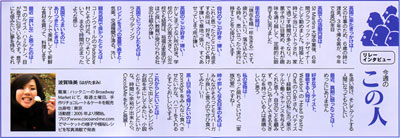How to temper chocolate
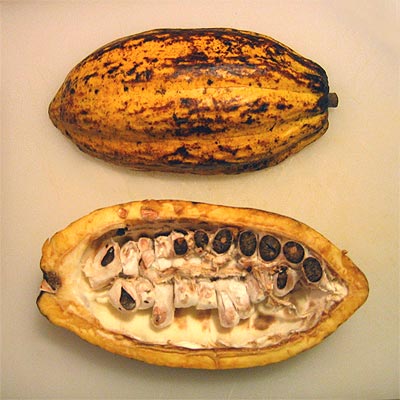
(Picture: I purchased two fresh cacao pod several years ago during the National Chocolate Week. The shop assistant told me they are from Cameroon. I bought them for £7 each. Très expensive. But it was an experience to remember for sure! – One was for keeping to dry, & the other for cutting open. The fresh beans were acrid & I didn’t like the taste atall, but the white pulp surrounding them was sweet & exotic like I never ever tasted before.)
.
.
Here comes the big entry. I am finally tackling this rather lengthy subject of tempering chocolate, after avoiding it for sometime…, shunning it under the carpet of “let’s write about easier things for now”.
.
But it’s become inescapable. I’ve already featured two recipes (ganache truffles, easter eggs & white chocolate wedding cake) in my blog requiring tempered chocolate to be used. Gotta press on with it, don’t I?
.
And besides, I had this impelling will to write this to give any assistance I can to the people looking for this type of information on the world-wide-web. – Because when I was self-teaching chocolate-making several years ago, I used to surf the web day-on-end to find useful introduction to tempering, but never had any luck! So maybe…, my contibution here would help out someone somewhere who’s in those same shoes I was back then!
.
One note to people new to tempering is that this technique is quite advanced. You’d certainly be practising this again & again. But don’t give up, don’t give up. You can use the same chocolate again to re-temper (unless it’s burnt). And cetainly don’t go spending silly money on automatic tempering machines which are notoriously temperamental.
After a dozen or so go’s, it’ll be written in to your body, straightforward like riding a bicycle, & you’ll be laughing about why it was so difficult in the first place.
.
– – – – – – – – – – – – – – – – – – – – – – – – – – – – – – – – – – – – – – – – – –
.
WHY :: The reason for tempering
.
‘Tempering’ is a word to describe the very particular method of controlling the temperature of your melted chocolate.
.
When you melt down chocolate, the chain of cacao butter crystals become intrinsically unstable and loses its neat formation. Controlling the chocolate with certain precise temperature (tempering) stablizes back the crystals that went haywire.
.
The chocolate with the temper treatment will have the most beautiful glossy sheen that screams sophistication & a crisp snap when broken.
.
Chocolate needs to be tempered if you want to use it as-is, or for moulding (de-moulding would be easier as the chocolate will shrink), for coating your bonbons, & making chocolate decorations.
.
If you allow your chocolate to solidify without tempering, or after inadequate tempering, you’d notice that you’d get the most aestheticly awful looking end-product with white streaks called ‘fat bloom’. Not only that, you yourself would be losing your ‘temper’ (excuse the pun! Had to say it didn’t I…) because it takes absolute ages to harden…
‘Fat bloom’ is a term used to describe the marks on your chocolate when the natural fat from the cocoa butter has displaced to the surface. Note it could also appear when you have nuts or nut oil in your bonbon filling. The nut oil will slowly migrate to the surface over time.
.
Please note that improper storage with high humidity would also un-temper your chocolate, & unapetizing marks such as ‘fat-bloom’ & ‘sugar bloom’ would appear on the surface.
‘Sugar bloom’ = the splotchy sweat marks after the chocolate had been in contact with moisture. The moisture dissolves the sugar present in your chocolate & when that dries, the dissolved sugar crystallizes leave marks behind. Also worth remembering that sugar bloom may occur when chocolate encounters sudden temperature fluctuations, such as when removed from the cold fridge & then left open in a room. This is because it condensates moisture from the air.
.
– – – – – – – – – – – – – – – – – – – – – – – – – – – – – – – – – – – – – – – – – –
.
With WHAT :: The indispensable equipments
.
- Mixing bowls
- Spatula
- Digital probe thermometer, to constantly check the temperature of the chocolate. Once you’ve mastered tempering, you’ll ‘just’ know how the temperature of you chocolate is doing, & eventually & quite naturally this equipment will become redundant for you!
- Marble slab, larger the better. In the kitchen where I did my short apprenticeship, they had a slab that was huge – like around A0 size – it was too heavy for me to carry. The size I use in my kitchen is A3 size, which I think is the minimum size you’re required to have to do tempering on. Anything smaller you’d be encountering lots of over-spilling from the sides. – If you’re finding getting a marble slab a problem (I got mine from the local run-of-the-mill household goods store), I have heard that alternatively, you can try use a very clean & dry stainless steel surface, that is, if you don’t mind the potential scratch marks!
- Stainless steel scraper & palette knife for pushing, spreading & scraping the chocolate about on the slab. If you’re looking to purchase what the proffesionals use, try Keylink, a good UK supplier I’m constantly using for my chocolate making.
- Double boiler. To initally melt down your chocolates & then to keep the tempered chocolate at a constant & optimum temperature while you’re doing your chocolate work, such as dipping your truffles. I use a machine called Caloribac (purchased from Keylink). And oh, please don’t waste your time with doing a bain-marie over your hob (although keep in mind that this is purely just ‘my’ opinion!). I’ve tried doing that, & I managed to spill water in to my bowl of chocolate when I clumsily handled the extremely hot bowl with my oven gloves. Doh! And you can forget about putting the bowl back on the hob to keep the tempered chocolate at a constant temperature – It’s really hard to gage precise temperature control over it. You’re likely to lose the temper & have to re-do the whole tempering process again…
.
– – – – – – – – – – – – – – – – – – – – – – – – – – – – – – – – – – – – – – – – – –
.
HOW :: The tempering methods
.
There are three methods.
The ‘seeding’ method.
The ‘icy water’ method.
The ‘marble slab’ (tablage) method.
.
x x x x x x x x x x x x x x x x x x x x x x x x x x x x x x x x x x x x x x x x
.
The ‘seeding’ method:
.
Note, for this you need a supply of tempered chocolate, as the whole idea of the method is to introduce (‘seed’) stable cacao butter crystals to unstable liquid chocolate.
.
1. Put aside 1/3 of the chocolate & melt the rest. Melt until the temeprature of the liquid reaches:
55 ºC (130 ºF) for dark chocolate
45 ºC (110 ºF) for milk chocolate
40 ºC (100 ºF) for white chocolate
.
2. Take it out of the double boiler in to a mixing bowl.
.
3. Deposit the 1/3 you kept aside.
.
4. Slowly mix it in (so as not to create air bubbles in your mixture). Constantly keep check on how the temperature’s doing. You need the temperature to go down to the following numbers before using it for your chocolate work:
27 ºC (81 ºF) for dark chocolate
26 ºC (79 ºF) for milk chocolate
25 ºC (77 ºF) for white chocolate
.
x x x x x x x x x x x x x x x x x x x x x x x x x x x x x x x x x x x x x x x x
.
The ‘icy water’ method:
.
It’s a good way to temper on a Summer’s day when the kitchen is too warm.
.
1. First melt all your chocolates to the following temperatures:
55 ºC (130 ºF) for dark chocolate
45 ºC (110 ºF) for milk chocolate
40 ºC (100 ºF) for white chocolate
.
2. Take it out of the double boiler in to a mixing bowl.
.
3. Place this bowl in a larger bowl with cold water & ice. 10 to 20 seconds at a time. It’s a good idea to place a pastry ring or anything similar in the water bowl for the chocolate bowl to rest on so that it doesn’t slip around & risk pouring water in to your chocolate by mistake.
.
4. Spatula constantly, especially the sides & the bottom of the bowl where it cools quicker.
.
5. Bring the temperature DOWN to the following:
27 ºC (81 ºF) for dark chocolate
26 ºC (79 ºF) for milk chocolate
25 ºC (77 ºF) for white chocolate
.
6. Then place your chocolate bowl over another bowl of warm water, approx. at 35 ºC (95 ºF). Do this to bring the temperature UP to the following. Make sure you don’t go over the suggested figures or you’ll lose the temper:
30 – 32 ºC (87 – 89 ºF) for dark chocolate
29 – 31ºC (85 – 88 ºF) for milk & white chocolate.
.
x x x x x x x x x x x x x x x x x x x x x x x x x x x x x x x x x x x x x x x x
.
The ‘marble slab’ (tablage) method:
.
1. First melt all your chocolates to the following temperatures:
55 ºC (130 ºF) for dark chocolate
45 ºC (110 ºF) for milk chocolate
40 ºC (100 ºF) for white chocolate
.
2. Take it out of the double boiler in to a mixing bowl.
.
3. Pour 2/3 of it on to your marble slab. (Leave the remaining 1/3 in the mixing bowl. – Make sure you spatula down the sides of the bowl, you don’t want to have thin layers of chocolate drying up on the sides of the bowl as you work on your marble)
.
4. Using your palette knife, spread it across your marble.
.
5. Use both palette knife & scraper to bring the chocolate in to a mound in the middle again to keep the temperature of the mass uniform.
.
6. Repeat steps 4 & 5 (spread & regroup) while constantly checking the temperature. (If you’re fortunate to have a large marble slab, you’ll be tempering much quicker if you try shifting your scraping work from one end of the slab to the other. That way you’d always be using the cool surface that hadn’t been warmed up with chocolate yet!) Make sure you’re not introducing air bubbles to the liquid as you work it.
.
7. Bring the temperature down to the following:
27 ºC (81 ºF) for dark chocolate
26 ºC (79 ºF) for milk chocolate
25 ºC (77 ºF) for white chocolate
.
8. Pour back this chocolate in to the bowl where you’ve left the other 1/3. (At this point you’ve got to work quickly. The chocolate is rapidly cooling down as we speak!)
.
9. Slowly mix the two mixtures with your spatula. Make sure you thoroughly mix.
.
10. After mixing, the chocolate should reach the following temperature:
30 – 32 ºC (87 – 89 ºF) for dark chocolate
29 – 31ºC (85 – 88 ºF) for milk & white chocolate
.
x x x x x x x x x x x x x x x x x x x x x x x x x x x x x x x x x x x x x x x x
.
Top Tips:
.
Take time melting your chocolate. There are 6 elements to cacao butter crystals, which has different melt points, & you want to make sure you break it all down. You’ll also get a thinner coating on your bonbons.
.
Don’t go over the suggested temperatures when melting. The cassein & the milk protein in the chocolate will burn. And don’t go too low than the suggested temperature when you’re doing your chocolate work either – you’d end up with a layer of coating that’s too thick.
.
Never artificially cool the marble slab, as it’ll get too cold. Tempering must be done by gradually cooling.
.
Remember, the temperature & the humidity in your kitchen would seriously play a big part. Forget tempering in the Summer unless you’ve got a room cooler.
.
I personally find the ‘icy-water’ method risky & fiddly. Not only there’s the danger of getting the water in the chocolate, the temperature of your chocolate becomes very uneven.
.
Do use couverture, chocolate with real cacao butter, with atleast 31% of it – do not ‘coating chocolate’.
.
It’s fiddly to temper a small amount of chocolate. Atleast half a kilo is required.
.
A good way to test wether you’ve tempered correctly is to dip a clean knife in to it & pop it in the fridge for half a minute. If you see a set coat of shiny chocolate, you’ve got it right!
.
x x x x x x x x x x x x x x x x x x x x x x x x x x x x x x x x x x x x x x x x
.
Well, I hope it’s been of any help… Good luck… As for me, I’m off to bed…


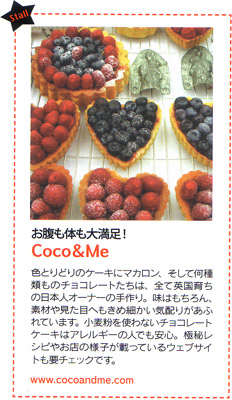

 (I wish I could show you what the inside looks like… Obviously, I can’t cut in to it… Now I know I should’ve taken a picture of a slice when I did the test-bake…!)
(I wish I could show you what the inside looks like… Obviously, I can’t cut in to it… Now I know I should’ve taken a picture of a slice when I did the test-bake…!)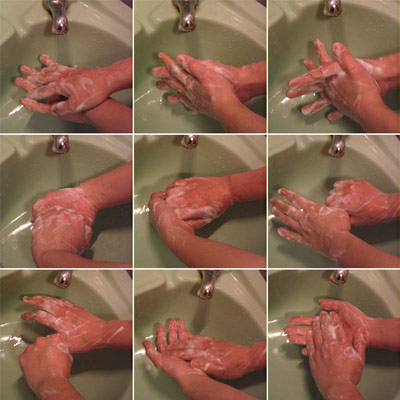
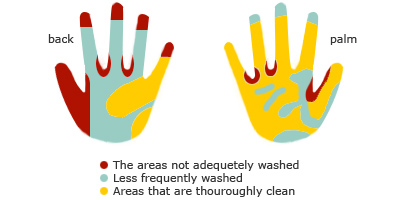 .
.
